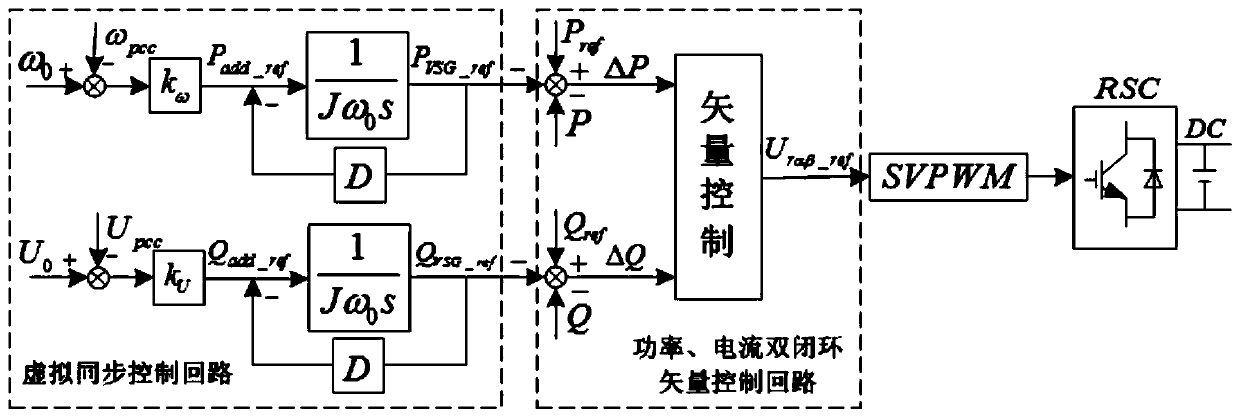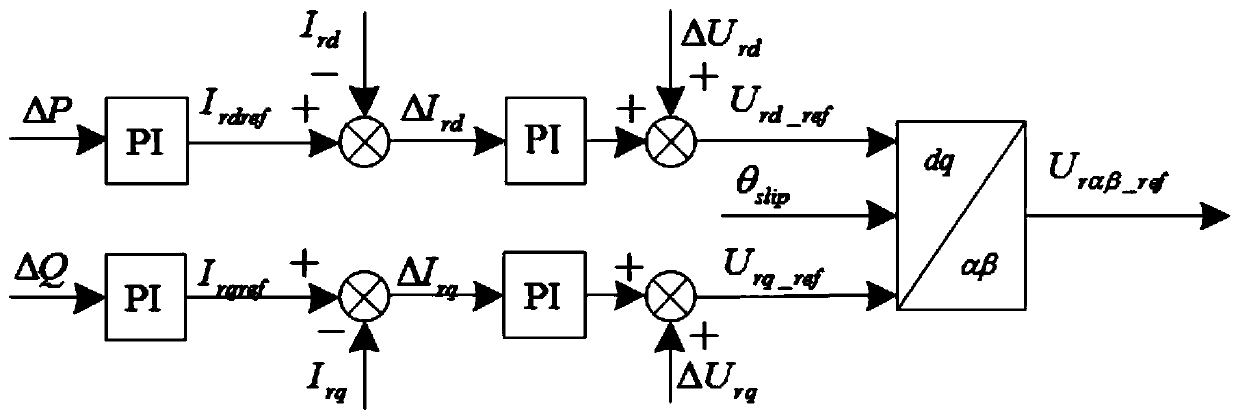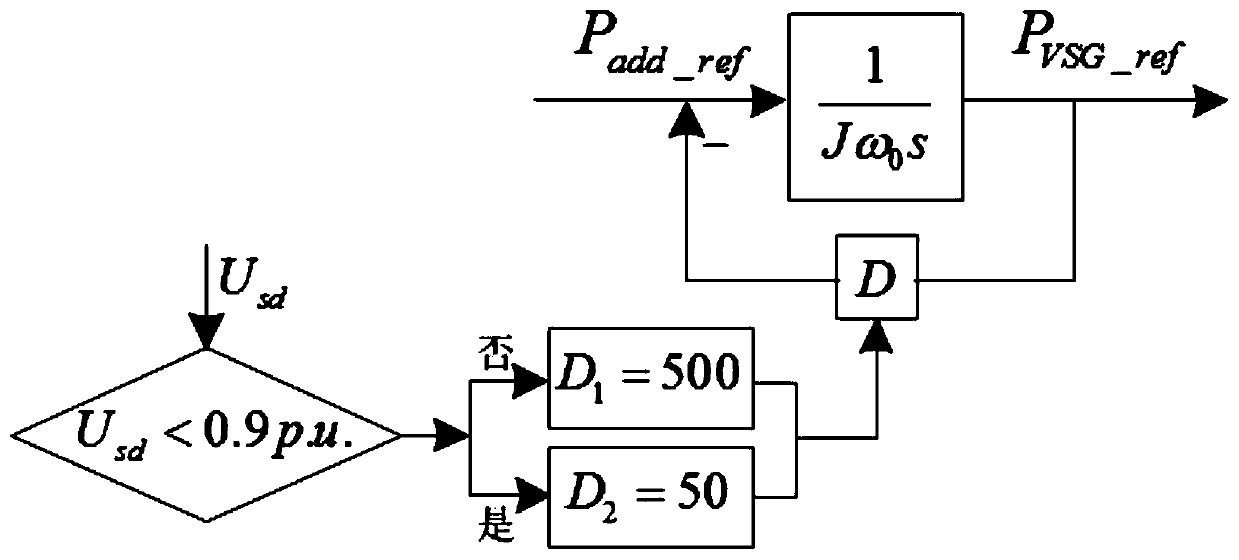Virtual synchronous control method for double-fed fan with low-voltage ride through function
A low-voltage ride-through and virtual synchronization technology, applied in wind power generation, electrical components, reactive power compensation, etc., can solve the problems of prolonged transient process, slow response to voltage and frequency fluctuations, inability to achieve DFIG compatibility and improvement, etc. Response rate, the effect of meeting the requirements of low voltage ride-through capability
- Summary
- Abstract
- Description
- Claims
- Application Information
AI Technical Summary
Problems solved by technology
Method used
Image
Examples
Embodiment Construction
[0029] In order to describe the present invention more specifically, the present invention will be further described below in conjunction with the accompanying drawings and specific implementation examples.
[0030] In this embodiment, a DFIG with a capacity of 3.0MW and a rated voltage of 690V is taken as an example, and the model is built using the motor convention. In the embodiment, firstly, the parameters in the fan and the measurement module are per unitized. The parameters of DFIG are as follows: Stator resistance R s =0.013pu, rotor resistance R r =0.024pu, stator inductance L s =0.239pu, rotor inductance L r =0.213pu, stator and rotor mutual inductance L m =3.99pu, number of pole pairs p=3, specifically including the following steps:
[0031] 1. If figure 1 As shown, a double-fed fan virtual synchronous control method with low voltage ride-through function mainly consists of two parts, namely: virtual synchronous control loop and traditional power current double...
PUM
 Login to View More
Login to View More Abstract
Description
Claims
Application Information
 Login to View More
Login to View More - R&D
- Intellectual Property
- Life Sciences
- Materials
- Tech Scout
- Unparalleled Data Quality
- Higher Quality Content
- 60% Fewer Hallucinations
Browse by: Latest US Patents, China's latest patents, Technical Efficacy Thesaurus, Application Domain, Technology Topic, Popular Technical Reports.
© 2025 PatSnap. All rights reserved.Legal|Privacy policy|Modern Slavery Act Transparency Statement|Sitemap|About US| Contact US: help@patsnap.com



